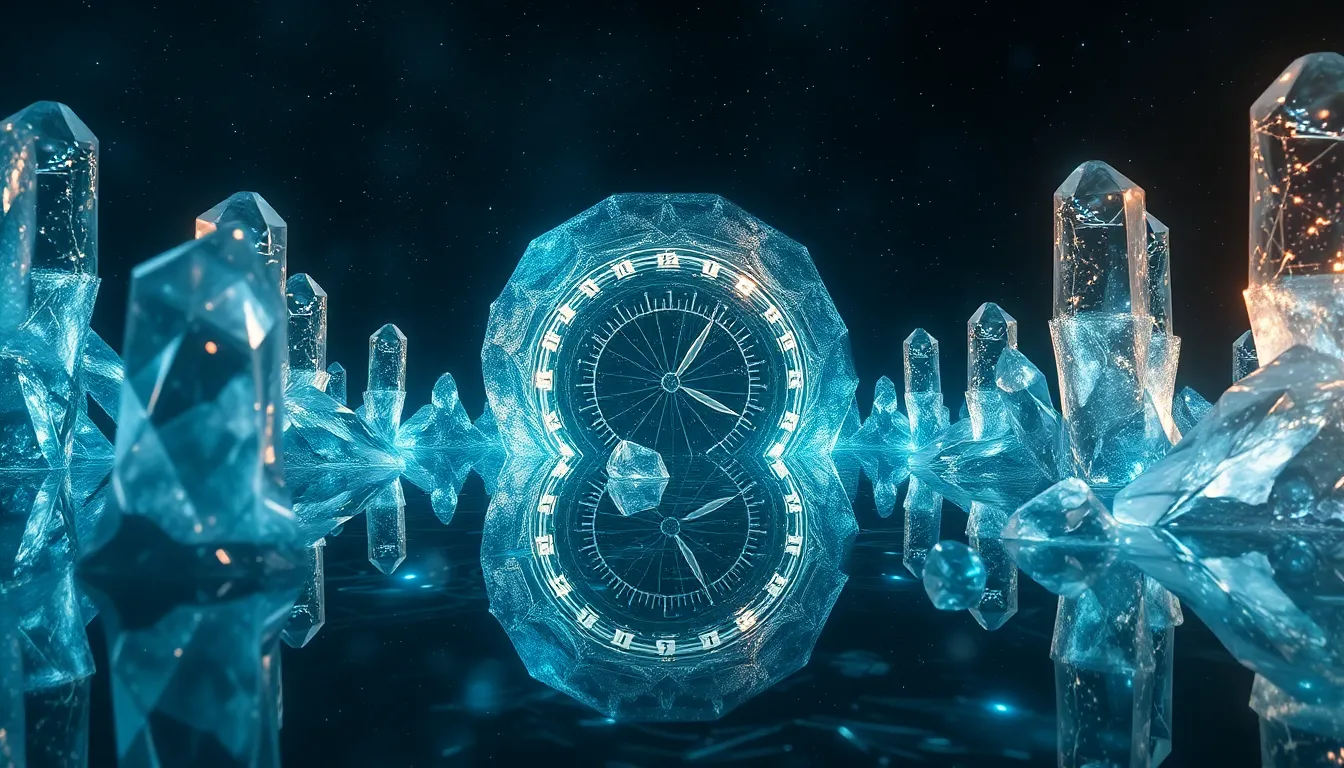The Crystal Mirror: Reflecting the Mysteries of Time
1. Introduction to the Crystal Mirror
The crystal mirror is a fascinating object that serves as both a reflective surface and a conduit for mystical properties associated with crystals. Historically, mirrors have been significant in various cultures, often symbolizing truth, perception, and the duality of reality. The association of mirrors with mystery dates back to ancient civilizations, where they were used not only for personal grooming but also for spiritual and ritualistic purposes.
In many cultures, mirrors have been thought to possess magical qualities, acting as portals to other realms or as tools for divination. The crystal mirror, in particular, combines the reflective nature of mirrors with the energy and properties of crystals, creating a powerful symbol of introspection and connection to the universe.
2. The Science of Crystals: Understanding Their Composition
Crystals are solid materials whose constituents are arranged in a highly ordered microscopic structure, forming a crystal lattice that extends in all directions. This unique structure is responsible for the various properties of crystals, such as their optical characteristics and ability to amplify energy.
Crystals are formed through geological processes, including the cooling of molten rock, evaporation of mineral-rich water, and deposition of minerals from gas. Each type of crystal has its own unique composition and characteristics, which are often attributed to its specific formation process.
In many cultures, crystals are believed to possess healing properties, enhance meditation, and promote spiritual growth. For example:
- Amethyst: Known for its calming properties and ability to enhance intuition.
- Clear Quartz: Considered a master healer, amplifying energy and intention.
- Rose Quartz: Associated with love, compassion, and emotional healing.
3. Mirrors Through History: A Journey Through Time
The evolution of mirrors can be traced back to ancient civilizations. Early mirrors were made from polished stones, such as obsidian, and were used by cultures such as the Egyptians and the Chinese. As technology advanced, the production of mirrors evolved, leading to the creation of glass mirrors in the Middle Ages.
Notable historical mirrors include:
- The Mirror of the Queen: A legendary mirror said to possess magical properties in folklore.
- Venetian Mirrors: Renowned for their craftsmanship and beauty during the Renaissance.
- The Crystal Palace Mirror: A famous mirror used in the Crystal Palace exhibition in London.
4. The Symbolism of Reflection: Mirrors in Myth and Legend
Mirrors have long held symbolic significance in folklore and mythology. They are often seen as gateways to the soul or reflections of the self. In many traditions, looking into a mirror can reveal hidden truths or inner desires. For instance:
- In Greek mythology: Narcissus falls in love with his own reflection, highlighting the theme of self-obsession.
- In many cultures: Breaking a mirror is thought to bring seven years of bad luck, symbolizing the distortion of reality.
The metaphor of reflection extends beyond the physical act of looking into a mirror. It encourages introspection and self-discovery, prompting individuals to confront their inner selves and explore their true nature.
5. Crystals and Time: Theories and Beliefs
Throughout history, various cultures have believed in the connection between crystals and time. Some theories suggest that crystals can act as conduits of energy, facilitating time travel or influencing the perception of time. For example, certain crystals are thought to help individuals access past lives or future possibilities.
Cultural beliefs surrounding time and crystals include:
- Ancient Egyptians: Used crystals in rituals to connect with the past and future.
- Native American tribes: Believed that specific crystals could enhance spiritual journeys through time.
6. The Crystal Mirror in Modern Spirituality
In contemporary spiritual practices, the crystal mirror has gained popularity as a tool for meditation and self-reflection. Practitioners often use crystal mirrors to enhance their spiritual experiences, believing that they can amplify energy and facilitate deeper connections to the self and the universe.
Common techniques and rituals involving crystal mirrors include:
- Meditation: Using crystal mirrors to focus intention and elevate spiritual awareness.
- Ritualistic cleansing: Purifying the mirror with sage or water to enhance its energy.
- Visualization: Imagining desired outcomes while gazing into the crystal mirror.
7. Art and Literature: The Crystal Mirror as a Motif
The crystal mirror has been a recurring motif in art and literature, symbolizing themes of reflection, time, and self-awareness. Artists and writers have used mirrors to explore complex human emotions and the nature of reality.
Notable works that feature the crystal mirror include:
- “Through the Looking-Glass” by Lewis Carroll: A fantastical exploration of identity and reality.
- Salvador Dalí’s paintings: Often incorporate mirrors to symbolize duality and perception.
8. Scientific Perspectives: Can Crystals Influence Time?
Scientific exploration into the nature of time and crystals presents intriguing theories. While the idea that crystals can influence time remains largely in the realm of metaphysics, physicists and researchers are investigating the relationship between crystals and quantum mechanics.
Interviews with physicists have revealed:
- Crystals may exhibit properties that allow them to interact with time at a quantum level.
- Further research is needed to understand the full implications of these interactions.
9. Practical Applications: Using Crystal Mirrors in Daily Life
Incorporating crystal mirrors into daily life can enhance personal growth and mindfulness. Here are some tips on how to utilize crystal mirrors effectively:
- Set intentions: Before using a crystal mirror, clearly state your intentions for meditation or reflection.
- Create a sacred space: Find a quiet, comfortable area where you can focus on your practice.
- Regular practice: Consistency is key; make it a part of your routine to reap the benefits.
10. Conclusion: The Enduring Mystique of the Crystal Mirror
The crystal mirror continues to captivate the imagination, bridging the gap between the past, present, and future. Its allure lies in its ability to reflect not just our physical appearance but also our inner selves and the mysteries that surround us. As we explore the depths of what these mirrors represent, we find that they offer profound insights into our own lives and the larger universe.
Ultimately, the crystal mirror serves as a powerful reminder of the interconnectedness of time, space, and self-awareness, inviting us to embark on a journey of self-discovery and spiritual growth.



